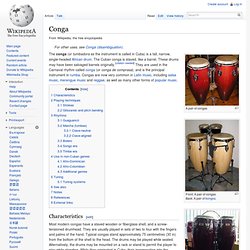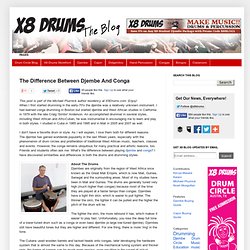

Your Brain on Drums. One World Singing & African Drumming. The Sound of dial-up Internet. Types Of Djembe Drums - Know Your Options Before You Buy! Know Your Options Before You Buy!

When you start to play djembe drums it's hard to resist buying the first affordable one you walk into. A djembe sale is just so tempting and you can't wait, right? But... Take your time! What you buy matters. There is more than one type of djembe for sale on the market. After reading this, you'll be able to tell an African djembe from an imitation. Authentic African Djembe Djembe drums originate in West Africa, where an ancient musical culture and tradition is still alive. Guinea, Mali, Ivory Coast, Burkina Faso Guinea Map Mali Map Ivory Coast Map Burkina Faso Map These countries are home of experienced carvers, who whittle the shells out of a tree trunk by hand.
Different types of tropical hardwoods are used, depending on what's available in the different regions. Authentic African djembes on Amazon.com The shells are mounted with African goat skin. Advanced players or ambitious beginners. If well crafted these drums have the potential for professional djembes. Bongo drum. Bongos (Spanish: bongó) are an Afro-Cuban percussion instrument.

The drums are of different size: the larger drum is called in Spanish the hembra (female) and the smaller the macho (male). They are membranophones, or instruments that create sound by a vibration of a stretched membrane.[1] History[edit] The origin of the bongo is unclear. Its use was first documented in the Eastern region of Cuba known as the "Oriente", during the nineteenth century, where it was employed in popular music styles such as Cuban son, Nengon, and Changui.[2] A similar small double drum, called Tbilat or TanTan, has existed in North Africa at least since the 12 century,[3] and so it is possible that the Cuban bongo is of Moorish rather than West African origin.
The bongo came to western Cuba at the turn of the twentieth century, when son migrated to the capital city of Havana. Technique[edit] Notable artists[edit] References[edit] Jump up ^ up ^ All about bongos: everything you need to know to start playing now! Conga. A pair of congas Front: A pair of congas.

Back: A pair of bongos. Characteristics[edit] Most modern congas have a staved wooden or fiberglass shell, and a screw-tensioned drumhead. They are usually played in sets of two to four with the fingers and palms of the hand. Playing techniques[edit] Strokes[edit] There are five basic strokes: Open tone (tono abierto): played with the four fingers near the rim of the head, producing a clear resonant tone with a distinct pitch.Muffled or mute tone (tono ahogado): like the open tone, is made by striking the drum with the four fingers, but holding the fingers against the head to muffle the tone.Bass tone (tono bajo): played with the full palm on the head. Glissando and pitch bending[edit]
The Difference Between Djembe And Conga - X8 Drums. This post is part of the Michael Pluznick author residency at X8Drums.com.

Enjoy! When I first started drumming in the early-70's the djembe was a relatively unknown instrument. I had learned conga drumming in Boston but started djembe and West African studies in California in 1979 with the late Craig 'Simbo' Anderson. An accomplished drummer in several styles, including West African and Afro-Cuban, he was instrumental in encouraging me to learn and play in both styles. I studied in Cuba in 1985 and 1995 and in Mali in 2005 and 2007 as well. I don't have a favorite drum or style.
About The Drums Djembes are originally from the region of West Africa once known as the Great Mali Empire, which is now Mali, Guinea, Senegal and the surrounding areas. The tighter the skin, the more rebound it has, which makes it easier to play fast. The Cubans used wooden barrels and tacked heads onto congas, later developing the hardware system that is almost the same to this day. Which one is for you? Beginners guide to the Frame Drum - Pete Lockett. Part 1.